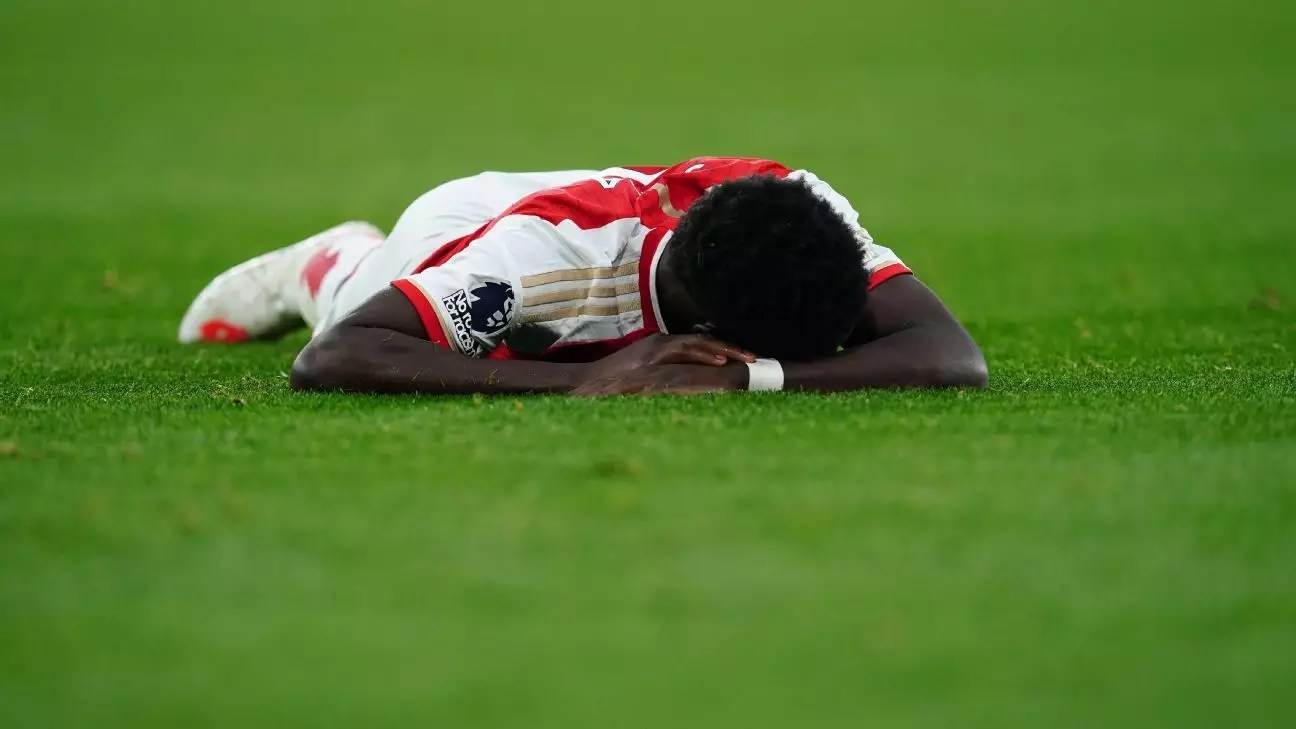The issue of player fatigue in football has transformed into a pressing dilemma, especially as the schedules of elite competitions expand. Over the years, professional footballers have voiced frustration concerning their relentless workloads, and the rise of UEFA’s revamped club tournaments alongside FIFA’s new Club World Cup has intensified these concerns. Instances of player burnout are not merely anecdotal; they stem from the sheer number of matches and travel commitments that players endure throughout a season.
With information revealing that the current club season is poised to be the longest on record—thanks to the Club World Cup set for June and July in the United States—it is easy to see why athletes are increasingly vocal about the suffocating demands of their profession. Not only are they responsible for their commitments to club competitions, but they also face pressure from international duties, often landing on the pitch multiple times each week.
Voices of Concern: Who is Speaking Up?
Recent developments have seen high-profile players like Erling Haaland, Kylian Mbappé, and Jude Bellingham take a stand against the congested fixture schedule. They have highlighted the profound psychological and physical strain placed upon players, emphasizing a critical need for change. Manchester City’s Rodri has gone further, suggesting that players might seriously consider industrial action if their grievances remain unheeded.
The discussion has since picked up momentum, with numerous footballers from elite clubs expressing similar sentiments. Real Madrid’s Thibaut Courtois and Liverpool’s Alisson Becker have joined forces with Rodri, indicating a growing readiness among players to pursue drastic measures if they continue to feel short-changed by the current structure. Coaches such as Pep Guardiola and Jürgen Klopp have also echoed these concerns. The narrative surrounding a potential strike illustrates the mounting tension between player welfare and commercial interests in football.
As player representatives highlight the possibility of strikes, it brings to light the fundamental issue of player welfare against financial imperatives that dominate the sport. Historically, football has skirted around the drastic measure of actual strikes, but this scenario could very well change with the continued depletion of player stamina and the increased demands from clubs and governing bodies.
The opportunity to participate in the new Club World Cup, which spans a month with 63 matches due to kick off just weeks post the Champions League final, represents an unprecedented strain. While FIFA maintains that this expansion simply replaces the Confederations Cup, the stark difference between the two competitions is evident. The Confederations Cup was far less demanding on players, featuring fewer teams and matches, thus allowing for better recovery.
As leading figures like Real Madrid’s Carlo Ancelotti advocate for a reduction in fixtures to mitigate the risk of injury, it becomes clear that the football calendar, as currently structured, is simply unsustainable at the elite level.
The global players’ union, FIFPRO, and national player associations have been rallying to address these issues through legal routes. Their ongoing case against FIFA rests on claims regarding the legality of the international match calendar and the recent expansion of the Club World Cup. FIFPRO’s assertion that the competition exacerbates an already overloaded schedule underscores the potential tipping point for player welfare.
Statements made by FIFPRO highlight the historical negligence of player unions concerning their workload. As claims of over-exertion gain traction, the implications of these decisions ripple throughout the football community. The European Leagues have also shown solidarity, joining FIFPRO’s legal challenge ostensibly to protect their interests and mitigate commercial greed driven by frequent matches.
While the prospect of a player strike may be captivating, the reality incorporates significant complexities. Players spanning various league tiers may not uniformly support strike action, particularly when many earn modest salaries compared to their elite counterparts. Would lower-tier players jeopardize their annual income in solidarity with high-profile stars? This consideration fuels the skepticism surrounding the feasibility of strike action, particularly when the focus remains firmly set on the legal proceedings against FIFA.
Furthermore, the question arises: which player unions can truly champion the needs of all players when disparities in earning potential exist? The necessity for a unified front seems paramount if substantial changes are to be enacted—yet varying levels of player prioritization make this a daunting prospect.
While the immediate fear of a player strike appears distant, the growing chatter regarding player fatigue and fixture congestion signals that a turning point may be brewing. Continued public dialogue surrounding player rights is crucial, even as players and representatives navigate legal routes against FIFA discretely. If nothing changes structurally within the sport, the risks associated with player well-being will only multiply, prolonging the struggle for fair treatment within professional football.
As the situation evolves, club owners and governing bodies must take heed of increasing player sentiments, or they risk reaching a tipping point that could reshape the landscape of football entirely.


Leave a Reply